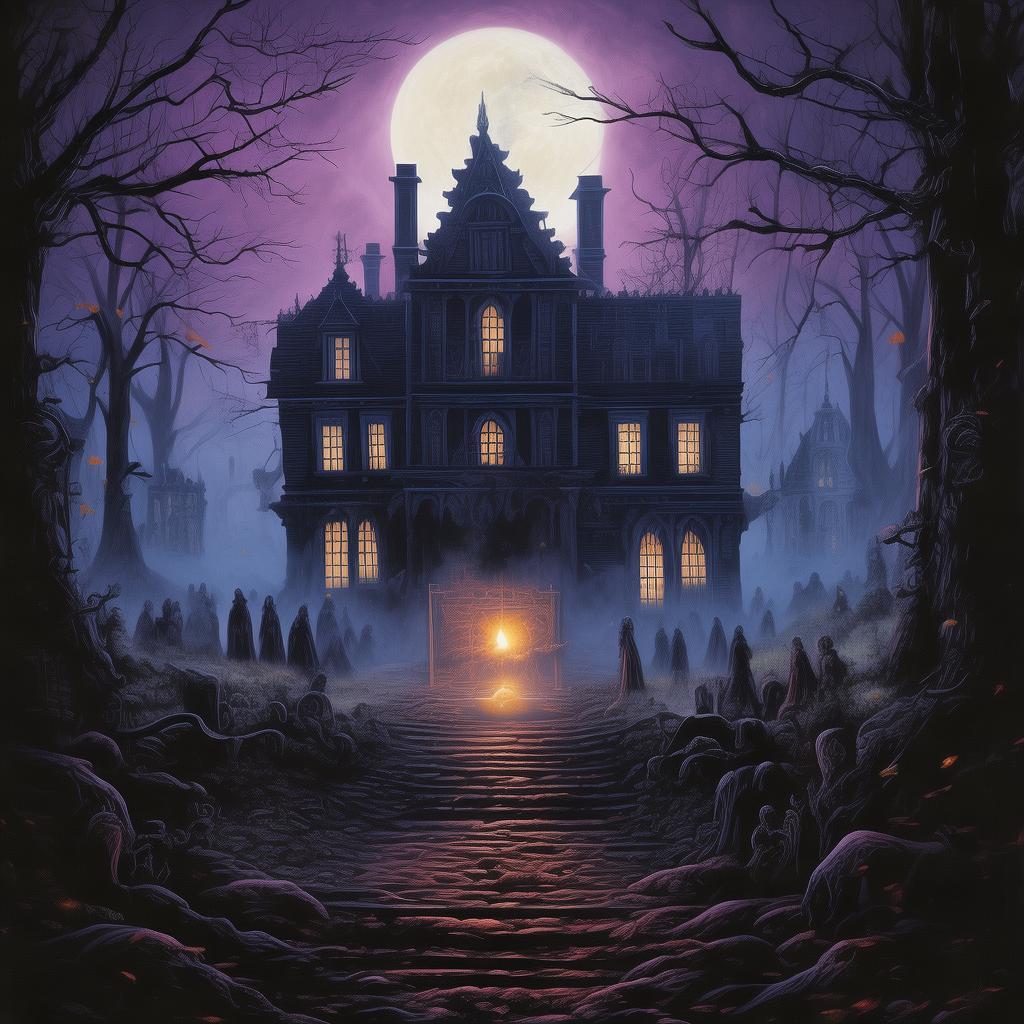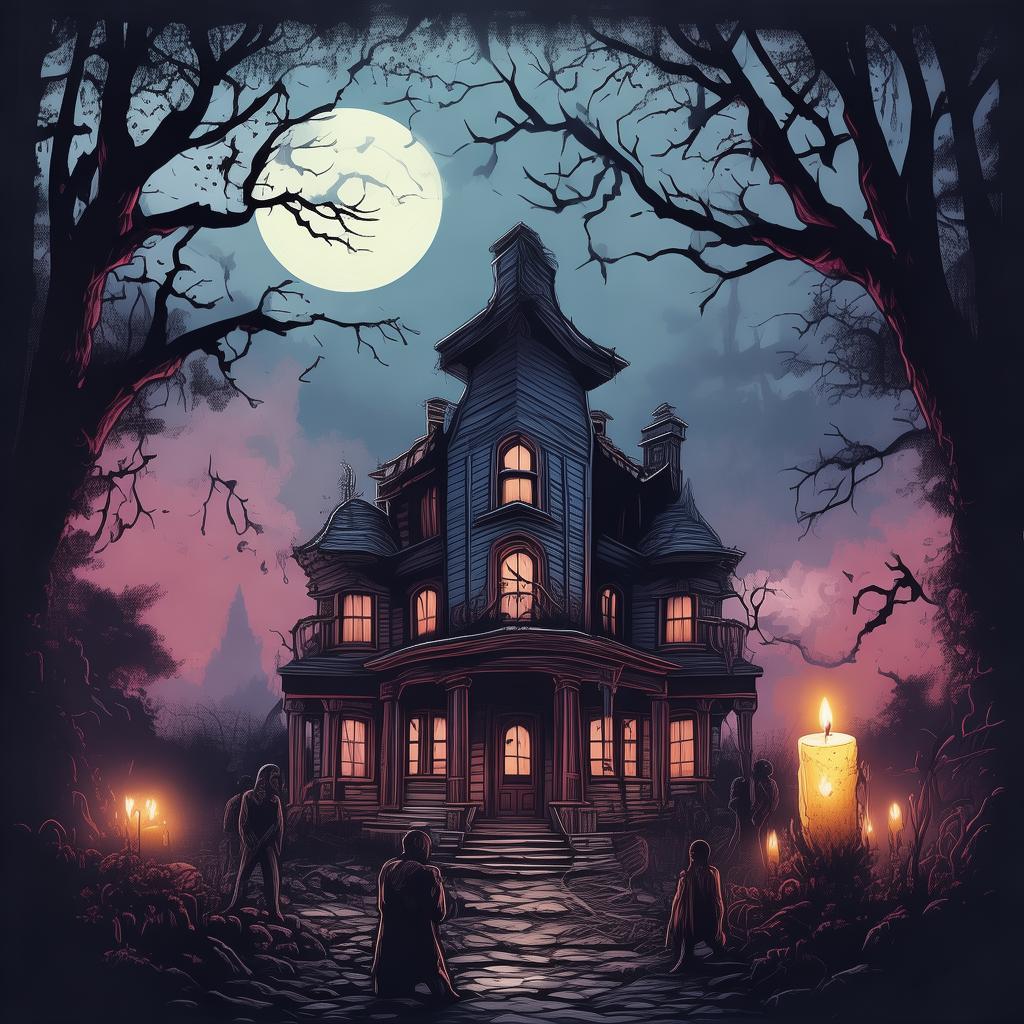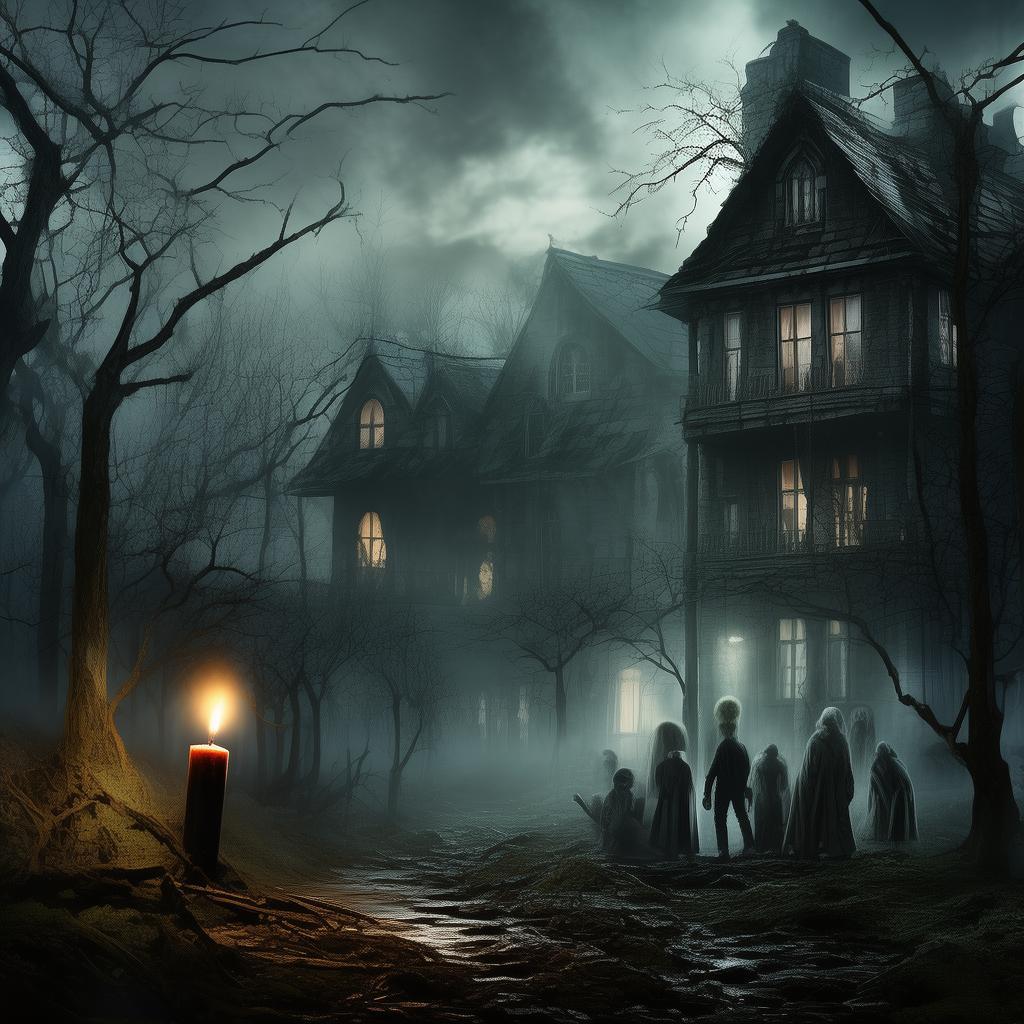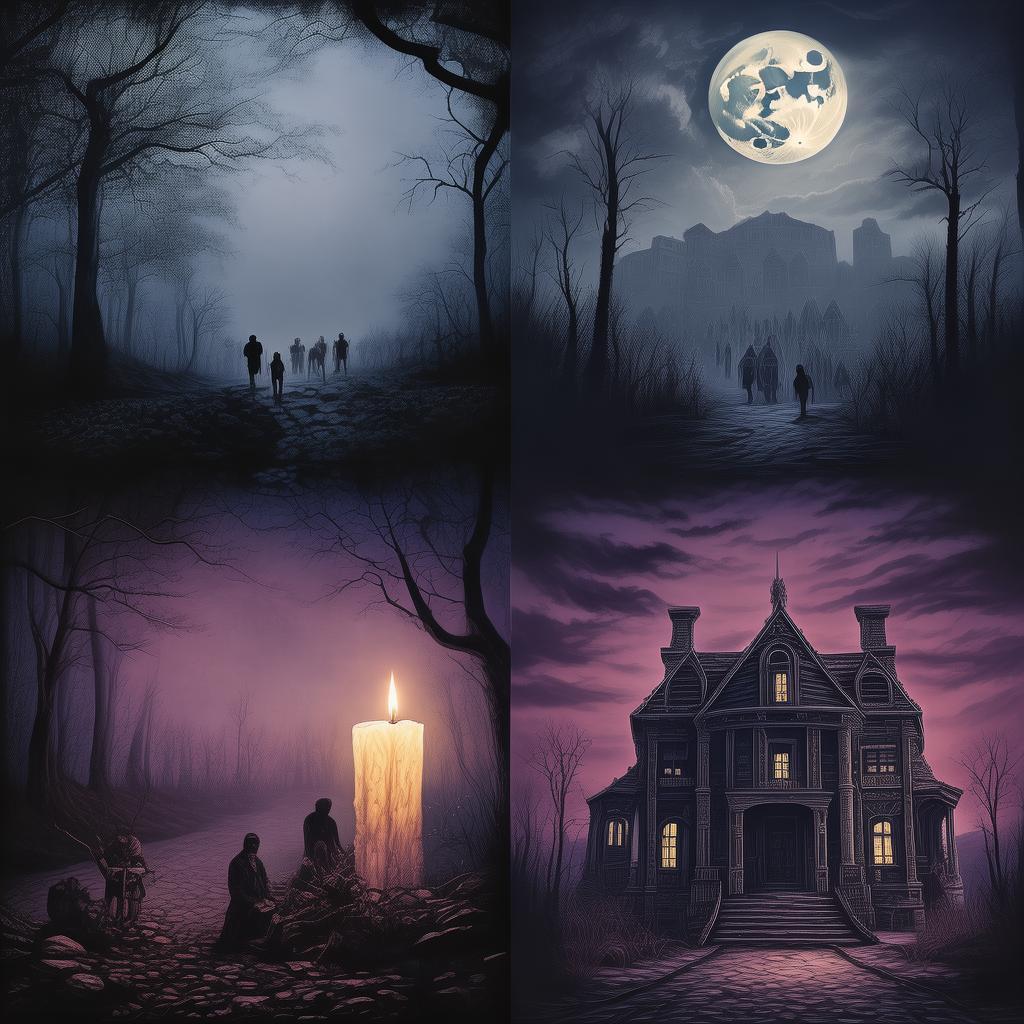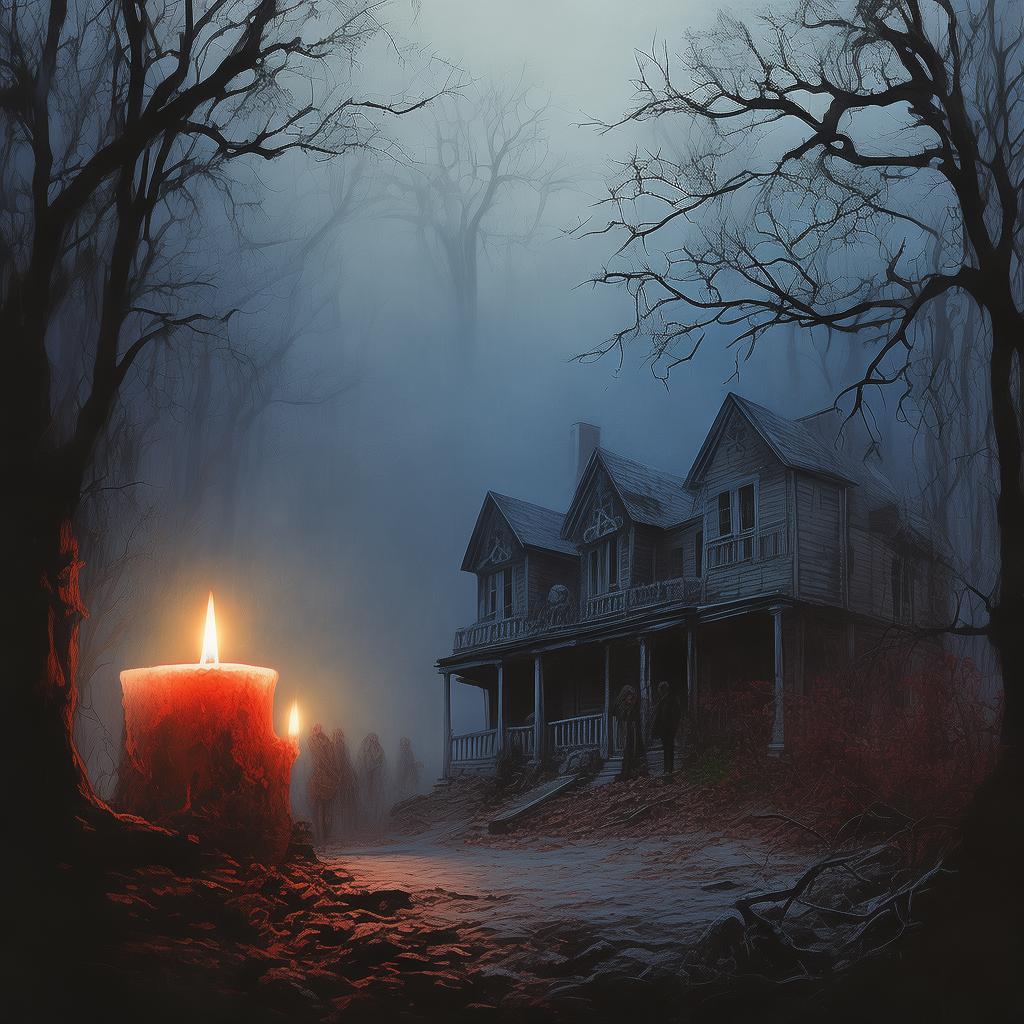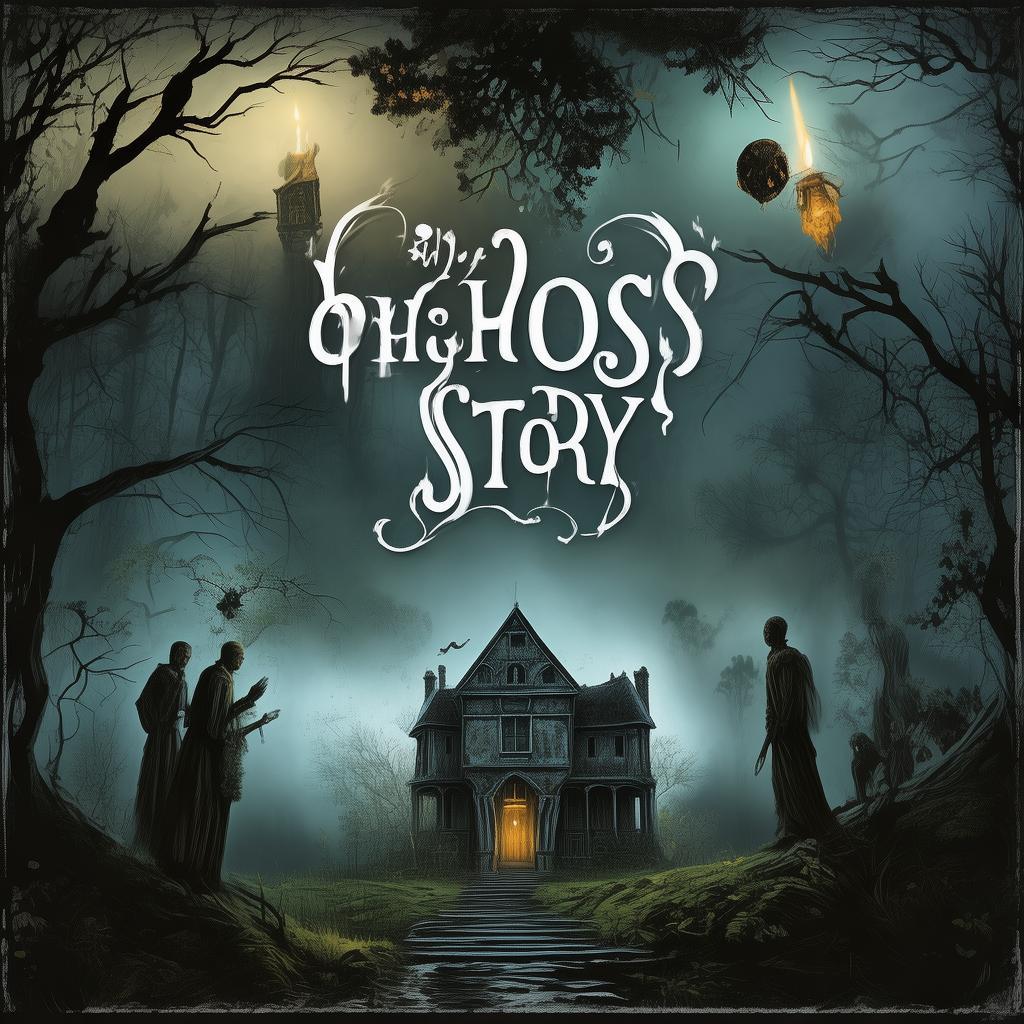The Symphony of Shadows: A Haunting Requiem
The grand old concert hall, The Symphony of Shadows, stood as a silent sentinel in the heart of the city, its opulent marble floors and towering ceilings whispering tales of grandeur and sorrow. It was a place where the melodies of life and the echoes of death intertwined, a venue where the line between the living and the departed was as thin as the thread of a composer's last breath.
The night of the grand performance was set to be one of celebration, a symphony of the most exquisite compositions to grace the ears of the elite. But little did the audience know, they were about to be the witnesses to a haunting requiem, a ghost story that would echo through the ages.
The maestro, a man whose life was music, had chosen the most poignant pieces for the evening: "The Lament of the Lost," "The Requiem for the Unseen," and "The Symphony of Shadows." Each piece was a reflection of the concert hall's history, a testament to the souls that had perished within its walls.
As the first notes of "The Lament of the Lost" filled the air, the audience was enveloped in a rich tapestry of sound. But amidst the music, there was a presence, an unseen force that seemed to dance between the strings and the wood of the piano. The first to notice was Clara, a young violinist whose eyes had seen the world and yet found solace in the music she played. She felt a chill, a coldness that seemed to come from within the instrument itself.
The maestro, sensing something amiss, paused the orchestra. "Clara, what is it?" he asked, his voice tinged with concern.
Clara looked up, her eyes wide with fear. "I don't know, but there's something... something here with us," she whispered, her fingers trembling as she touched the strings of her violin.
The audience murmured in confusion, some reaching for their programs, others for the comfort of their seats. The maestro, a man of unwavering resolve, nodded. "Very well, Clara. Play on, but be mindful of the notes."
As Clara's violin began to play, the hall seemed to come alive. The walls seemed to breathe, the air to pulse with a life of its own. The music grew more intense, the emotion more palpable. It was as if the notes were not just sounds, but spirits, reaching out from the past to touch the present.
The second piece, "The Requiem for the Unseen," was a somber dirge, a call to the dead. The audience, now fully engaged, felt the weight of the music, the sorrow of the lost. But as the music swelled, the chill returned, stronger than before. The air grew thick with the presence of something unseen, something unfelt.
It was then that the concert hall's true history revealed itself. The maestro, now aware of the concert hall's haunting, shared a tale of its origins. Many years ago, a young composer had taken his own life in the very room where the audience now sat. His final composition, "The Symphony of Shadows," had been left incomplete, his soul trapped within the music, unable to rest.
The third piece, the title track, "The Symphony of Shadows," was the most haunting of all. The music was dark, brooding, a reflection of the composer's soul. The audience felt the weight of the music, the burden of the composer's unfinished business.
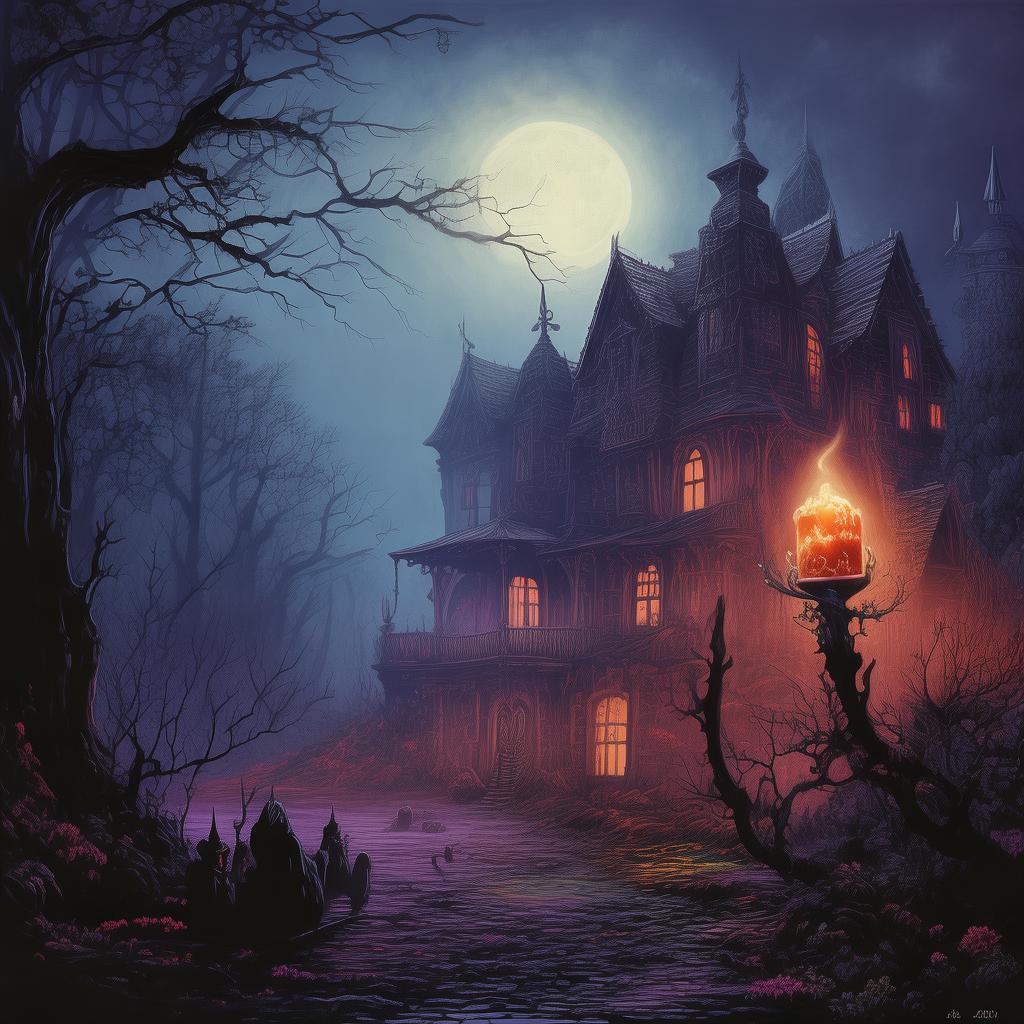
As the final notes of the symphony rang out, the audience was left in silence. The maestro, with a heavy heart, turned to the audience. "Ladies and gentlemen, what you have just heard is not just music. It is the story of a man, his life, and his death. The Symphony of Shadows is his requiem, his final farewell."
The audience, now in awe, began to file out of the concert hall. Clara, still holding her violin, approached the maestro. "Sir, do you think his soul has found peace?"
The maestro sighed, his eyes reflecting the shadows of the hall. "I like to think so, Clara. But sometimes, the past is too strong, too haunting. We must remember, music is not just sound; it is a connection to the past, a bridge to the soul."
As the last of the audience left the concert hall, the maestro and Clara remained behind. They stood in the center of the grand hall, the air thick with the echoes of the past. The maestro turned to Clara, a knowing smile on his face. "Come, Clara. Let us play 'The Lament of the Lost' one more time. Perhaps, it will help."
Clara nodded, her eyes filled with determination. She took up her violin, and the hall once again filled with the haunting melody. As the music played, the shadows seemed to fade, the chill to dissipate. The maestro and Clara played on, the music a beacon, a light in the darkness.
The Symphony of Shadows was more than a concert; it was a ghost story, a tale of the living and the dead, the past and the present. It was a reminder that music, like life, is a symphony of emotions, a requiem for the living and the lost.
✨ Original Statement ✨
All articles published on this website (including but not limited to text, images, videos, and other content) are original or authorized for reposting and are protected by relevant laws. Without the explicit written permission of this website, no individual or organization may copy, modify, repost, or use the content for commercial purposes.
If you need to quote or cooperate, please contact this site for authorization. We reserve the right to pursue legal responsibility for any unauthorized use.
Hereby declared.

